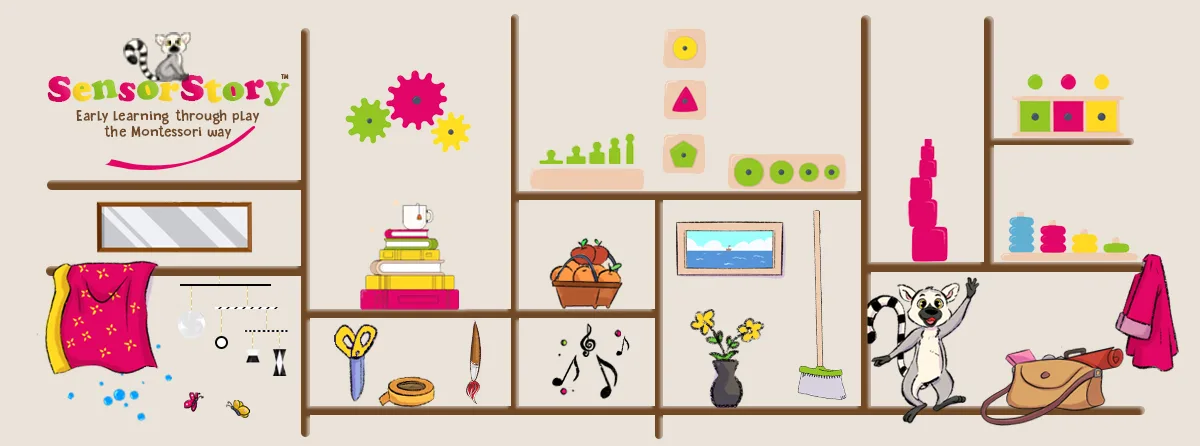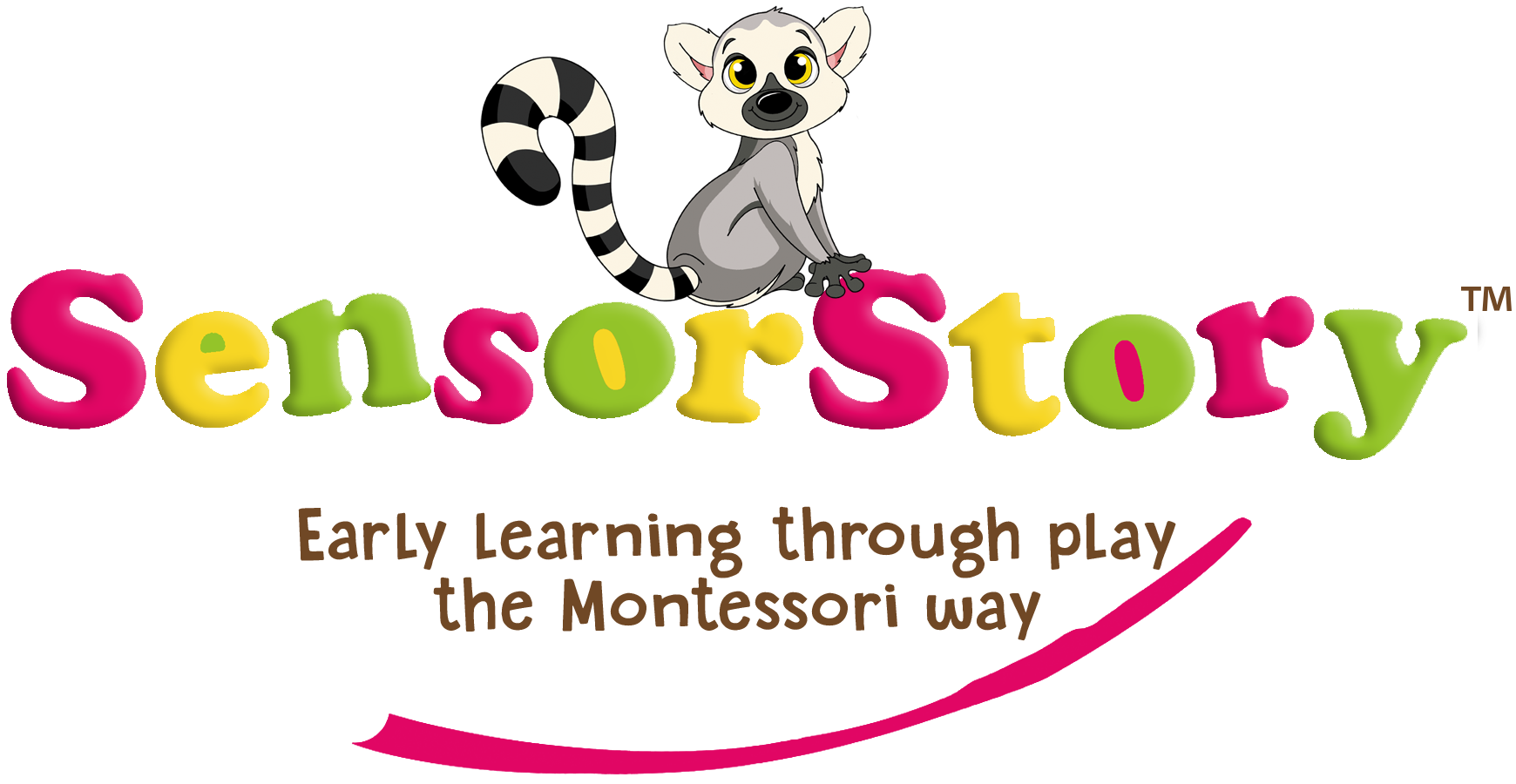We've put together a detailed list of at-home Montessori-aligned activities suitable for a 2-year-old.
Here you will see age-appropriate activities for all areas, in our Ultimate Series Of Activities to try at home, where the emphasis is on providing a prepared environment and allowing the child to actively engage in self-directed learning.
So what is my child working on mastering at this age?
Between the 24-30 month age, your toddler is likely in a Sensitive Period for refined movement and language development; in fact they are typically half way through their Sensitive Period for movement.. Engaging in Play Schemas involving intricate movements and symbolic play supports their growth in motor skills and language. This period emphasises independence and purposeful exploration in an organised environment. To learn more about Play Schemas click here.

1. Practical Life:
* Toileting independence: 'potty learning' or 'potty training' is highly encouraged at this stage in Montessori. To learn more about why Montessori says 2 years old is optimal for toileting independence, click here. Use a wide bade step stool for reaching the toilet and sink, encouraging self-flushing and hand drying.
* Dressing skills: offer clothes with more complex fastenings (buttons, snaps), practice zipping and unzipping jackets and putting on and taking off shoes and socks independently.
* Putting on coat: not only a recommended practical life skill to develop, teaching your toddler the Montessori Coat Flip can help with avoiding tantrums when leaving the house by giving your toddler a sence of independence, responsibilty, control and self-confidence. Click for more detailed guidance.
* Flower arranging: provide your toddler with some fresh flowers, a small vase, a small pitcher of water, and some scissors to let them cut and arrange the flowers by themselves.
* Wet and dry pouring: offering a small pitcher and a small glass or cup, with water or dry items like beans for pouring.
* Observation: observe your toddler carefully and respectfully, without interrupting or distracting them, to learn about their needs, interests, and abilities, offering activities that are challenging yet achievable to foster their sense of independence and self-confidence.
* For further guidance on Practical Life Skills and activities by age, click here.
2. Eye-Hand Coordination:
* Geometric peg puzzles: offer your toddler a geometric peg puzzle to help develop their fine motor skills.
* Activities with smaller pieces: as their concentration is increasing, provide opportunity for your toddler to refine and control their pincer to complete activities with more pieces.
* Everyday sorting: engage your toddler in sorting everyday items like socks or toys.
* Scredriver set, remembering to present to your toddler, without talking and very slowly, for them to see the movement clearly.
* Hammering shapes into corkboard. Various sets can be purchased online, or offer giant pushpins, a corkboard and a child-sized mallet.
* Lock box; encourage your toddler to open and close the locks, hiding treasures for them to find inside to add interest.
* Stereognostic bags: these bags are crafted with narrow openings on the sides, allowing only the hand to enter without enabling visual inspection. The concept behind this design is to encourage your toddler to explore and identify objects solely through touch, fostering the development of their stereognostic sense. This sense becomes prominent around the age of 2.5 years and is commonly employed when, for example, searching for keys in a bag. The containers can be filled with assorted items, preferably those easy to recognise by touch, whether random objects, paired items, or objects following a specific theme.
3. Movement:
* Ball Kicking: Engage in activities that involve kicking a soft ball back and forth.
* Place a Montessori balance board in your toddlers envrionment for them to explore.
* Dance and movement to music.
* Jumping; jumping over a chalk or tape line on the floor. Once jumping with both feet, introduce something with elevation.
4. Sensory Exploration:
* Smell activity: offer home-made scented playdough for exploration.
* Texture boards: create a cardboard boards with different textures (smooth, rough, soft) encouraging tactile exploration and vocabulary building (e.g., "smooth," "soft").
* Sensory bins: fill a bin with materials like rice, lentils, sand, or dried beans and hide small toys, objects or fabric letters for your toddler to discover through touch. Introduce scoops, containers, and small tools for exploration.
* Taste testing: provide a variety of safe, age-appropriate foods with different flavors, encouraging your toddler to taste and describe the flavors.
5. Language Development:
* Point and label: Encourage your toddler to point to and name objects in books or around the environment.
* Mirror talk: place a child-safe mirror at the your toddlers eye level and point and name to body parts.
* Objects with identical cards for matching; classified sets of objects that have
matching cards. Identical pictures and objects, where the object can be put on top of the picture card to cover it. Allows your toddler to understand that a 3D item can be represented in 2D, for example a ripe yellow banana matched with an idential picture a ripe yellow banana.
* Objects with similar cards for matching; classified sets of objects that have
matching cards. Similar pictures and objects, where the object can be put on top of the picture card to cover it. Allows your toddler to understand the essence of an object, for example a ripe yellow banana matched with a similar, unripe green banana.
6. Culture:
* Create sensory bins with sand and water to explore land and water formations. Use simple molds to create islands, mountains, and lakes, discussing the characteristics of each land form.
* Cultural artwork exploration: display famous artworks from different cultures and artists in your toddlers environment. Provide art materials for your toddler to create their own interpretations.
* Introduction to different languages: read multilingual books and sing songs in different languages. Learn simple greetings and phrases together in various languages to promote an early understanding and appreciation for linguistic diversity.
* Zoology: Montessori learning materials for zoology include animal puzzles, animal figurines, and animal cards. You can also use books about animals and nature and visit farms, zoos' and wildlife parks.
7. Music Exploration:
* Create a designated space for free dance; play music with a steady beat and encourage your toddler to move freely. Join in the dance and celebrate movement.
* Sing-Along sessions: sing familiar songs with your toddler, using songs with simple lyrics and repetitive melodies. Encourage your toddler to join in and sing along.
* Musical freeze: play music and dance around. Pause the music and encourage your toddler to freeze in place. Resume the music and repeat the activity.
* Sound jars: fill clear containers with various materials (e.g., rice, beans, bells), seal the containers and let your toddler shake them to discover different sounds.
* Listening walks: take short walks and listen to the sounds in the environment for exploration of everyday sounds. Discuss sounds like birds chirping, footsteps, or car noises.
8. Art and Self-Expression:
* Chalk drawing: have a tabletop chalkboard and a bowl of chalk in various colours, or explore pavement and garden wall chalk drawing.
* Stamping activities: Offer child-safe stamps and ink pads or paint and encourage your toddler to explore stamping patterns.
* Leaf printing: collect leaves of various shapes and sizes, dip leaves in washable paint and press onto paper. Discuss leaf shapes and explore colour mixing.
* Offer homemade or shop-bought playdough, with child-safe tools like rolling pins and cookie cutters for shaping and creating simple sculptures.
9. Social Interaction:
* Create a dress-up box, with open-ended clothes such as scarves, gloves, glasses and belts, as opposed to prescriptive costumes that don't allow for creativity. Facilitate imaginative play and role exploration.
* Use picture cards or books to discuss emotions and develop emotion recognition. Encourage your toddler to express and recognise emotions in themselves and others.
* Arrange family meals where everyone comes together to share food. Encourage passing food and serving each other. Discuss table manners and socialising during meals.
10. The Whole Child Development:
* Attend our weekly SensorStory Baby and Toddler Montessori parent-child sensory classes! Follow this link to enrol your infant here.
We hope we have given you some inpiration for activities to do with your 2 year old!
Remember, follow the child, adapting activities based on your observation of your toddler's developmental stage and individual interests. The key in a Montessori environment is to provide your child with real, purposeful, and age-appropriate tools and materials that allow them to engage in activities independently and at their own pace.
Disclaimer: Adult supervision is required for any activity suggested by SensorStory. Please follow any directions and/or warnings on the labels(s) of any materials used during such activity & be aware of any potential choking hazards or allergies.
Click here to see our
Activities To Do With A 2.5 Year Old FAQ.
